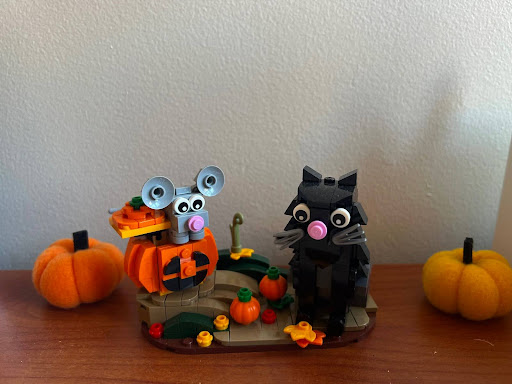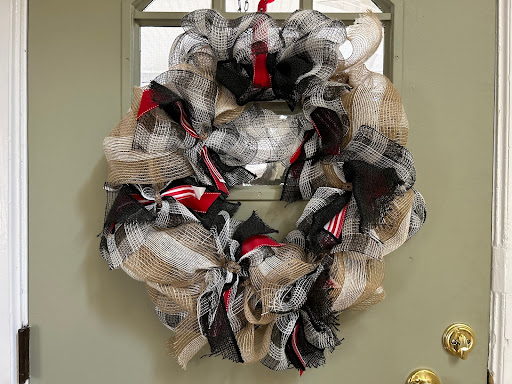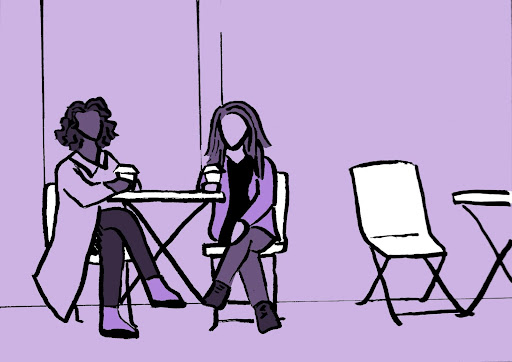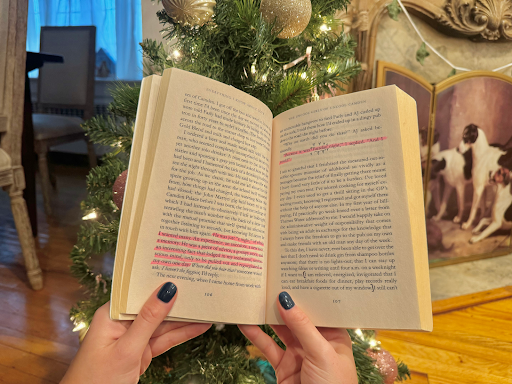When it comes to college, there are a plethora of expenses, including room and board, everyday necessities and even room decor. However, having a vibrant and personalized space does not have to be expensive. Getting creative with colors, shapes and patterns to produce a more comforting and unique space to live. Here are three versatile ways that St. John’s students can transform a bland room to a lively one without having to be a professional artist.
Add Color to the Mundane

A student’s room should reflect their personal aesthetic. However, the coloration of a room does not need to be over the top with contrasting colors and clashing patterns. When it comes to adding a dash of color to a room, it’s best to follow the “simple-but-effective” rule.
By painting otherwise mundane items, students can create their own trinkets for their rooms without overspending on a store-bought item. Just over five dollars, this acrylic paint set works extremely well on many surfaces, including Mason jars or wine glasses (glass), flower pots (plastic) and trinket dishes (ceramic).
A desk or nightstand area’s liveliness can be enhanced with a solid color or a pattern by painting some of these items.
“I make clay decors like displays and trinket dishes because they are cute, and then I paint them,” said St. John’s University senior Ivy Chen. “I like to paint on a board or use oil pastels because it looks cool and is easy to place on your wall.”

Additionally, paint pens provide students with a more controlled utensil of drawing rather than a paintbrush which can be harder to maintain. Using different varieties of a color on a black canvas creates a neon-like sign that is not only cheaper than a store-bought neon sign, but holds a personal touch with it as well.
Ranging from a simple striped pattern to a vibrant display of fruit to using three shades of the same color, students can upgrade standalone items to the next level with some paint and a little patience.
Build Your Own Decor

Legos are not just for young kids; in fact, they are small but clever ways to incorporate creativity, color and playfulness into a living area. The beauty of Lego decor lies in its versatility. From villages to flowers, Legos amplify the charm of a bookshelf, desktop or nightstand.
One of the key elements of using these small bricks is their vibrant palette, which produces a lively environment in a controlled area — pops of color are often too cluttering if they are over the top. With Legos, students can personally control the amount of product strewn throughout the room.
Displaying Lego structures throughout a bedroom fosters a student’s love of creativity as well as provides a sense of pride from having put together the set.

Transforming a room from bland hues is simple when adding small Lego structures. Especially since they provide endless possibilities, Legos are extremely diverse, and students can find a set that expresses some of their personal likes and interests. The simpler lego sets are relatively inexpensive and do not take up too much space, and yet, they add a corner of charm and nostalgia to any living space.
Use Ordinary Items Around the House
While this idea may sound elementary, the results are anything but. By simply tying ribbons together, students can create holiday wreaths to celebrate the seasons, tassel garlands to hold pictures or even door framers to create an endearing entryway.
The vibrant array of colors and textures available in ribbons opens up a wide variety of possibilities which allows both a pop of color along with an expression of unique style.

Crafting with ribbons ranges from an easier skill level like tying knots on a string to a more seasoned craft of weaving intricate designs into quilts or wall hangings. Ribbon garlands require minimal effort; simply create a short pattern of three to five colors and patterns that blend nicely together, then alternate tying them around a long string.
Holiday wreaths add a three-dimensional piece of self-made art to a student’s living area; there are many online tutorials that connect newcomers with craft enthusiasts who want to share tips and tricks to make these creations therapeutic rather than frustrating.
Thick, unwired ribbons are the best for garland making since they are loose, flowy and allow for a more tassel-like image, while a wired ribbon is crucial for creating a fluffy wreath that holds the curls and twists of the design.
Both of these suggestions can be personalized either to fit a certain aesthetic that flows nicely with the rest of the room or to mirror the colors and atmosphere of current holidays and seasons.







